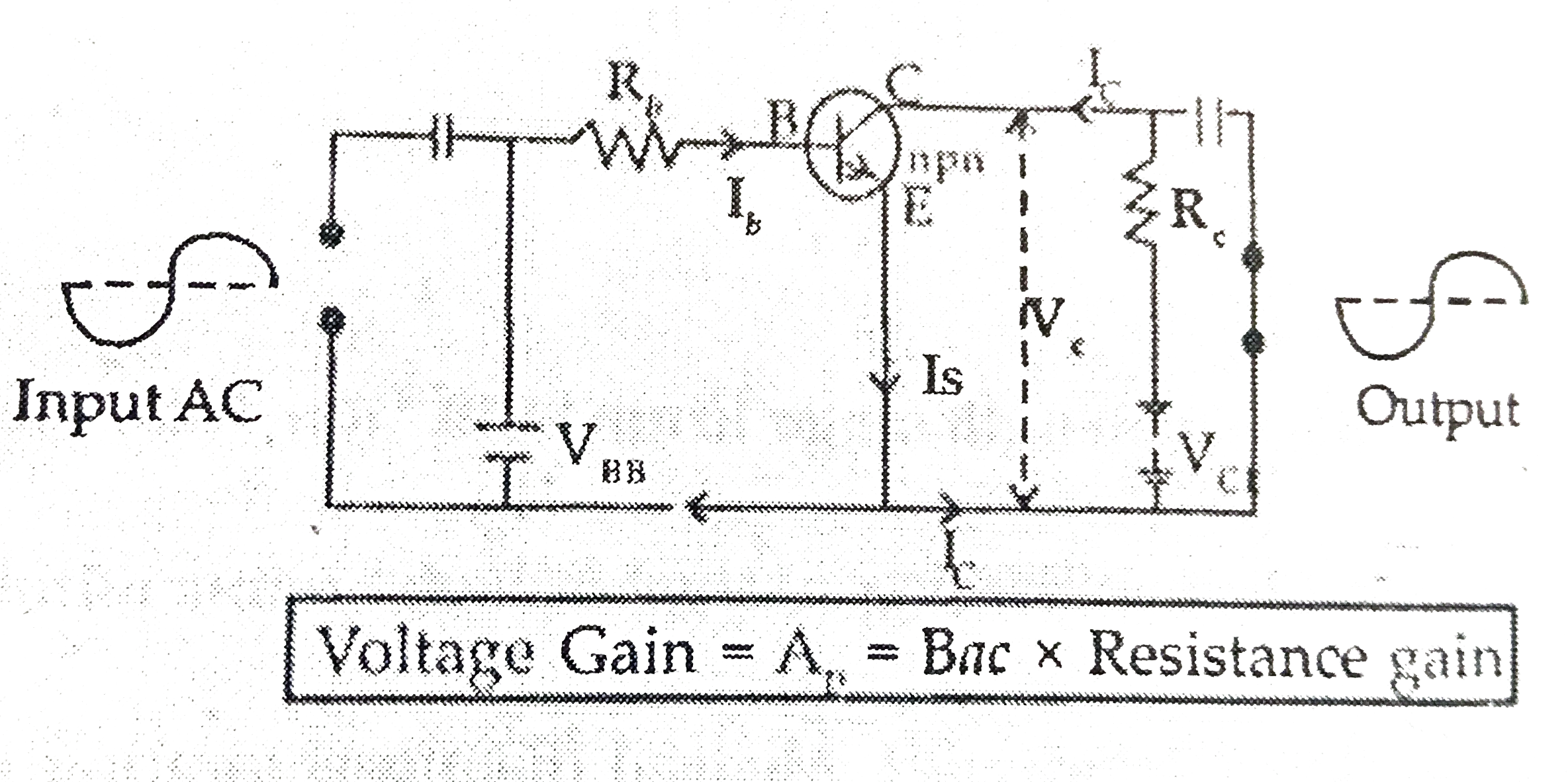Draw the circuit diagram of a common emitter transistor amplifier. Write the expression for its voltage gain. Explain , how the input and output signal differ in phase by 180∘

During positive half cycle of input single, forward bias of EB junction decreases casuing. Ie and hence Ic decreases. It results in voltage drop across load resistance RL. So, from the relation.
VCE=VCC−ICRL,V0 increases.
As collector is connected to the negative terminal of battery, increase in collector voltage indicates that collector becomes more negative. As in common ammeter amplifier, the output voltage decreases with increases in input signal and increases with decreasing input signal, so both input and output signals are out of phase with phase difference π. During negative half cycle of input signal, the forward bias of EB junction decreases. As a result, IE and hence IC decreases. Voltage Drop across RL=ICRL also decreases. So, the output voltage increases. As collector is connected to the positive terminal of VCC, so, increase in V0⇒ collector voltage will be more positive. An amplified positive signal is obtained across the output.
Topper's Solved these Questions
- XII BOARDSBOOK - XII BOARDS PREVIOUS YEARCHAPTER - XII BOARDSEXERCISE - PHYSICS (Theory) DELHI BOARD -2016 [SET -I][COMPTT.]
12 Videos
- XII BOARDSBOOK - XII BOARDS PREVIOUS YEARCHAPTER - XII BOARDSEXERCISE - C.B.S.E.CLASS-XII PHYSICS (THEORY) [SET-I] (SECTION-A)
5 Videos
- XII BOARDSBOOK - XII BOARDS PREVIOUS YEARCHAPTER - XII BOARDSEXERCISE - SECTION-B
65 Videos
- SAMPLE PAPER 2019BOOK - XII BOARDS PREVIOUS YEARCHAPTER - SAMPLE PAPER 2019EXERCISE - SECTION D
6 Videos
Similar Questions
Draw a labelled circuit diagram for a common emitter amplifier using n-p-n transistor. Write down the expression for its voltage gain. What is the phase difference between input and output signals?
View SolutionWith the help of a labelled circuit diagram, explain how an n-p-n transistor can be used as an amplifier in common-emitter configuration. Explain how the input and output voltages are out of phase by 1800 for a common-emitter transistor amplifier.
View Solution
Knowledge Check
In a common emitter amplifier , the phase difference between the input signal voltage and output voltage is
Aπ4B0CπDπ4In a common emitter amplifier, the phase difference between the input signal voltage and output voltage is.
Aπ2B0CπDπ4In a common emitter amplifier, the phase difference between the input signal voltage and output voltage is.
Aπ2BZeroCπ6Dπ
With the help of a labelled circuit diagram, explain how an n-p-n transistor can be used as an amplifier in common-emitter configuration. Explain how the input and output voltages are out of phase by 180 for a common-emitter transistor amplifier.
View SolutionDraw a labelled circuit diagram of a common base amplifier using a p-n-p transistor. Define the term voltage gain and write an expression for it.
View SolutionDraw the circuit diagram of a common emitter amplifier using n-p-n transistor. What is the phase difference between the input signal and output voltage? State two reasons why a common emitter amplifier is preferred to a common base amplifier.
View SolutionIn common emitter transistor amplifier circuit, the input signal voltage and the output collector voltage are ..............phase.
View SolutionIn a common emitter amplifier, the input and output voltage are out of phase by
View Solution
